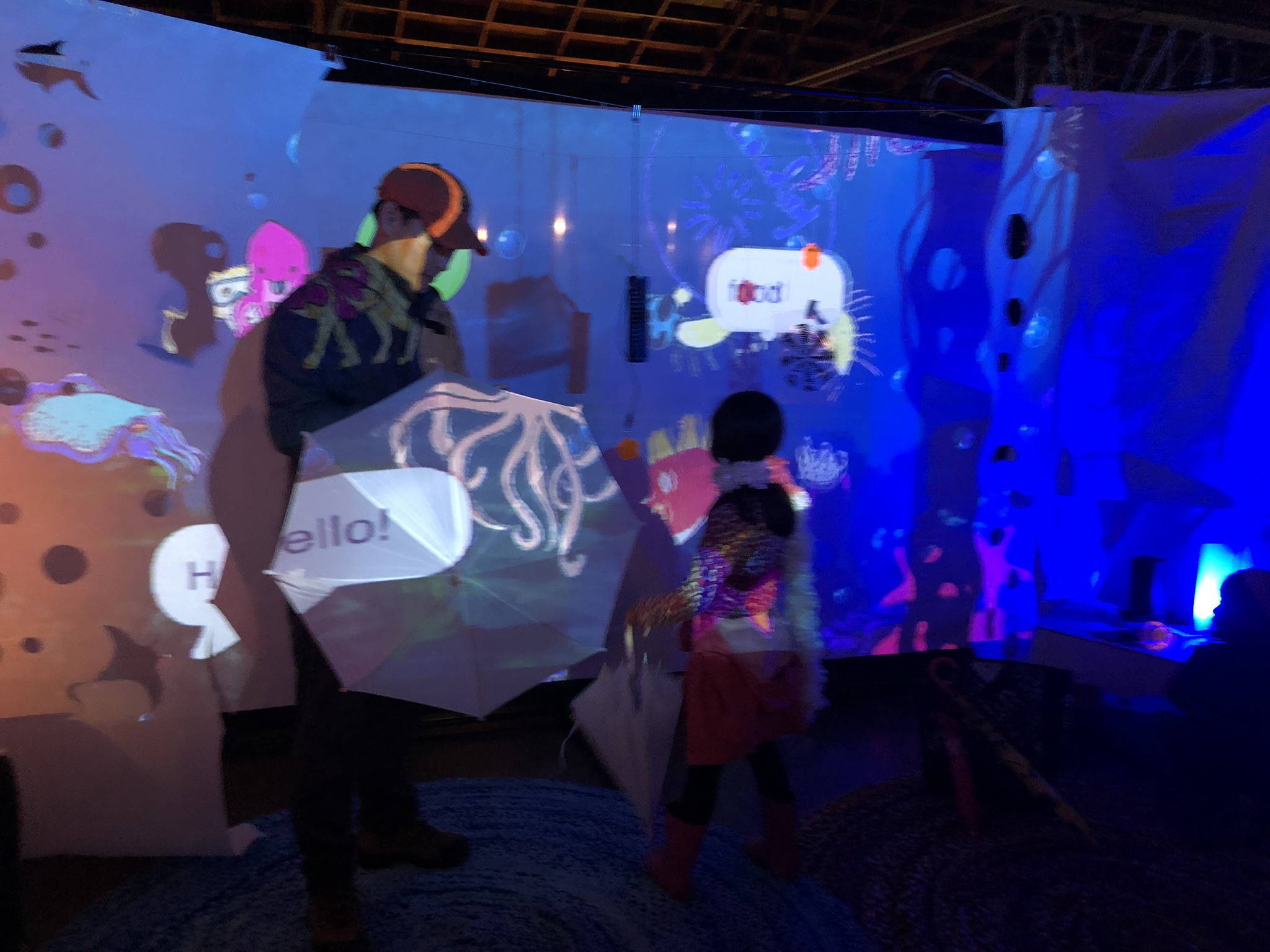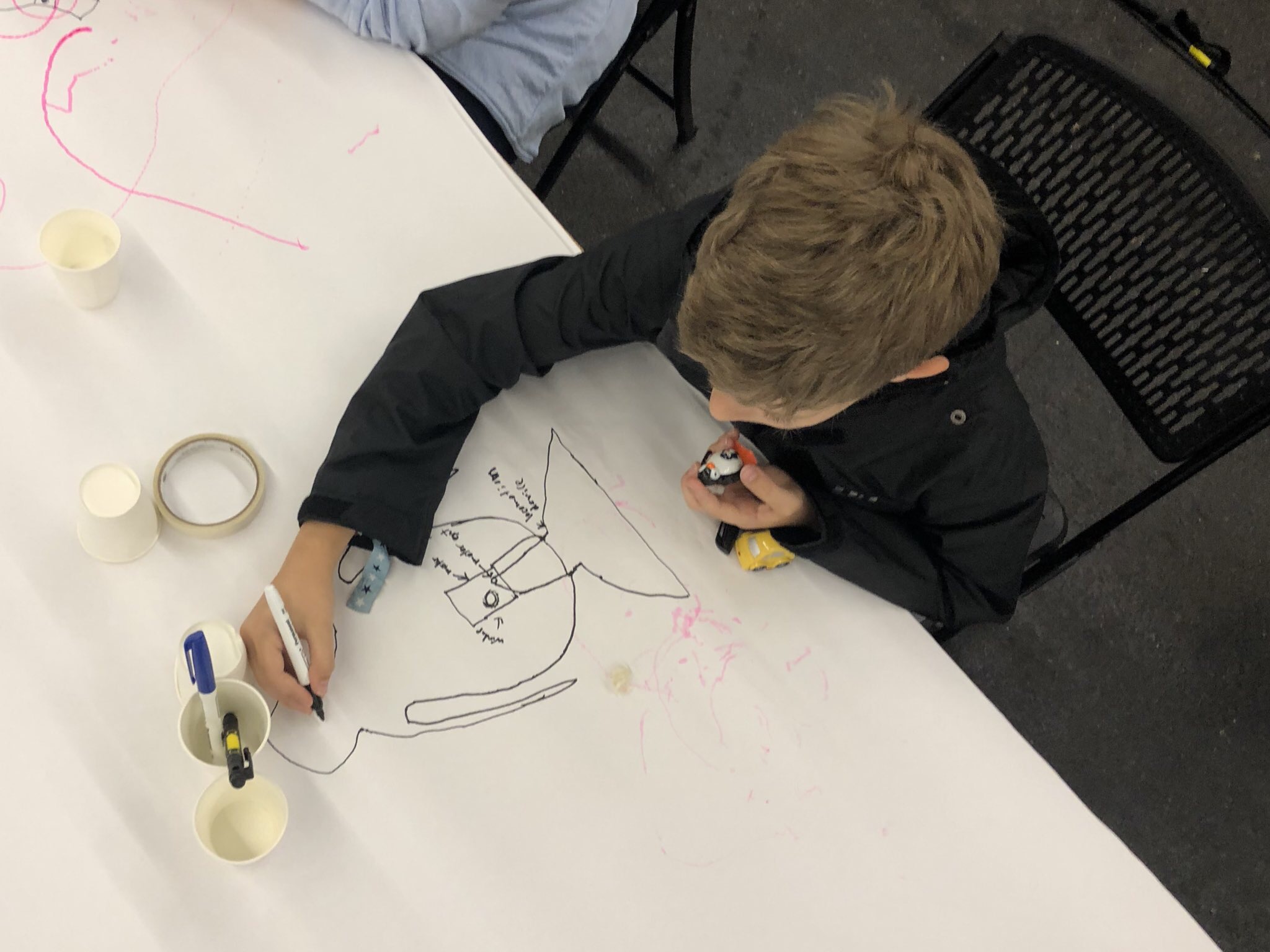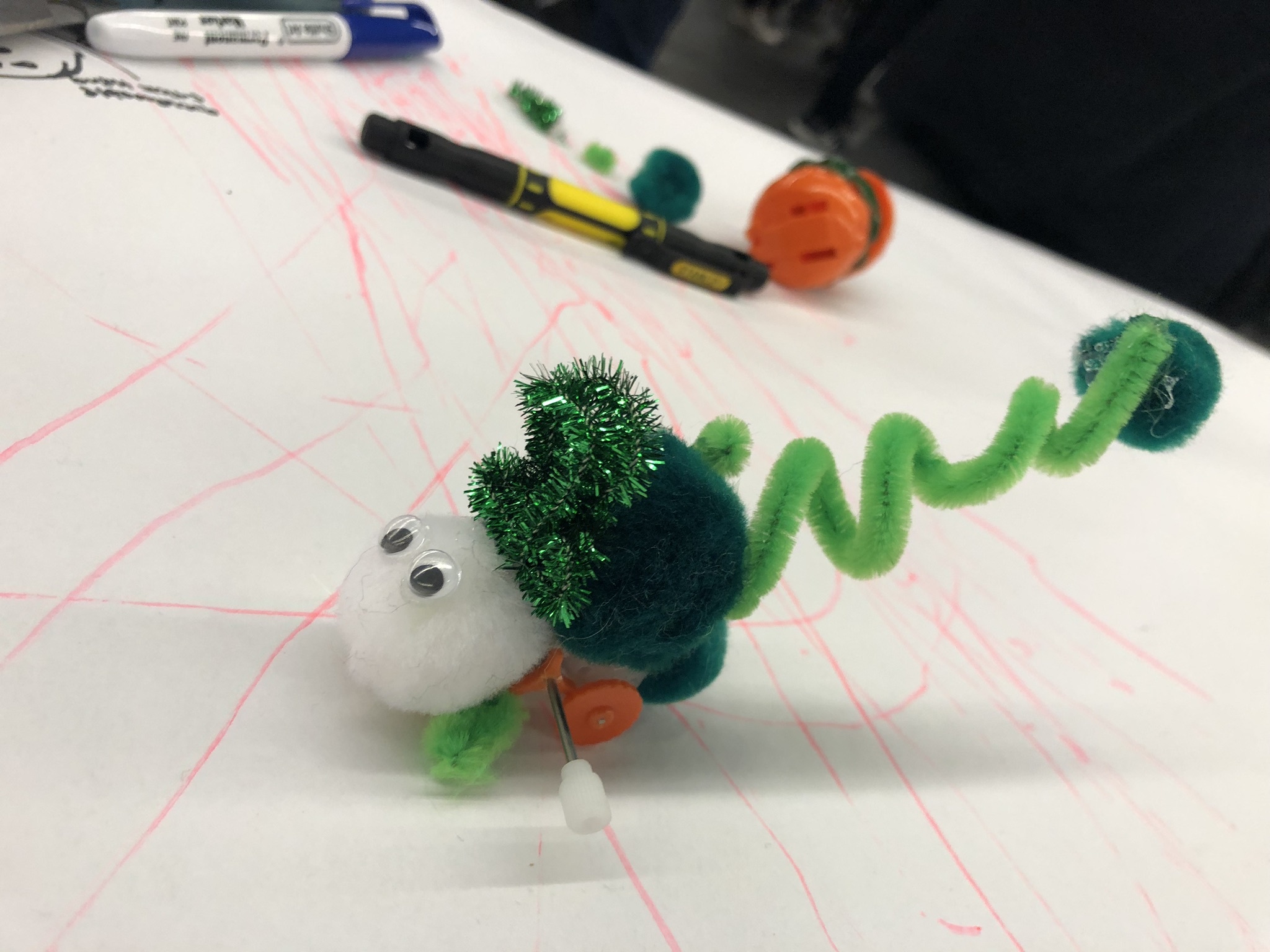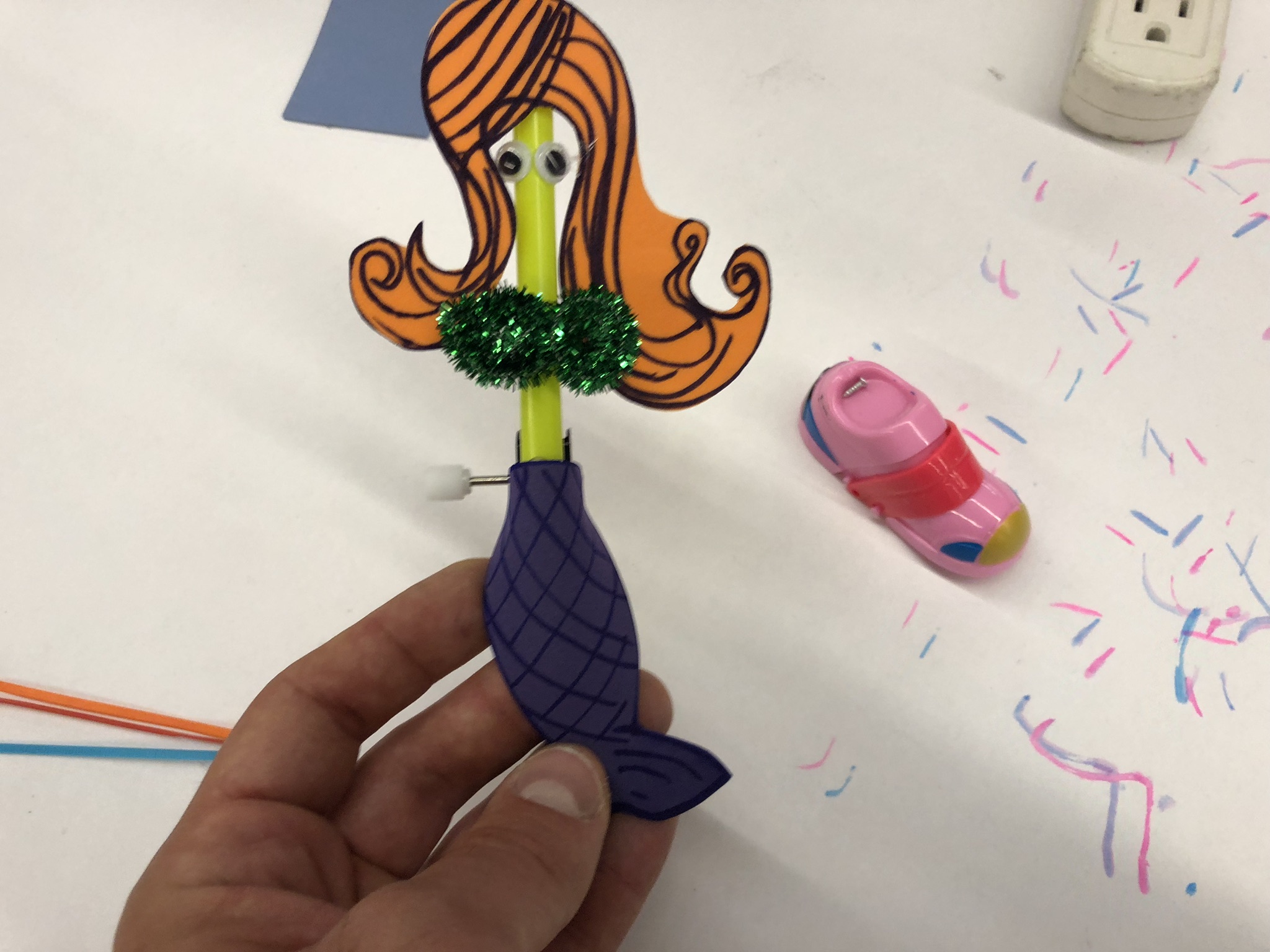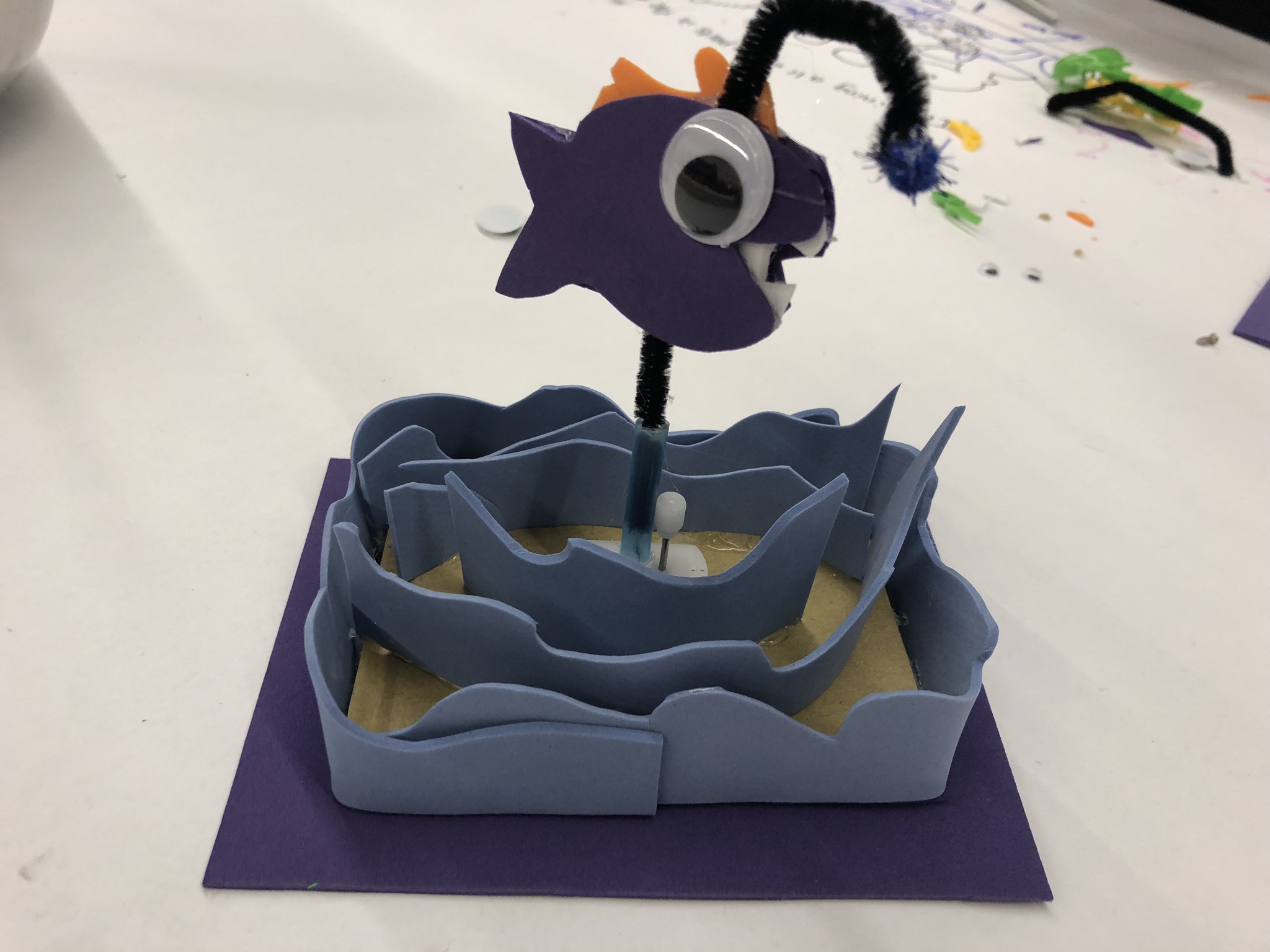Experimental Workshops at Maker Faire 2019
Earlier this month I ran a couple experimental workshop at Bay Area Maker Faire. This was the 13th year in a row participating in the event and as always, it was a great time to catch up with old friends, try out new things and get inspired by the wide variety of artists, makers and tinkerers.
We didn’t have a booth this year, so I was a bit of a free agent and could spend the time helping out friends around the event. On Saturday I joined Erik, Lindsay and the Strawbees crew to facilitate some free building and the creation of a “small giant” mousetrap machine.
It was so cool to see how they’ve been integrating programming and robotics to the low threshold building set and give a sense about possibilities for creating marble runs and rube goldberg-esque contraptions.
Later on during the day on Saturday I stopped by the Tinkering Studio booth to check out their new experimental workshop with projection play and programming. It was really fun to check out this weird prototype computational tinkering environment.
On Sunday I was asked to create a GIANT workshop in the main hall. This new format felt like a mash-up between project runway, mythbusters and coyote ugly with the workshop leader walking back and forth on a table that could fit 30-40 participants.
Initially, I was a bit hesitant to try this workshop style because in a tinkering workshop, the leader is usually not the center of attention as the facilitator wants to encourage participants to follow their own ideas. But after my own experiments with wind-up toy dissection and remixing I thought that the format could be interesting, dramatic and a bit performative.
I remembered the amazing twisted toys event led by Michael Brown at the Exploratorium several years ago and used this format as an inspiration for the workshop. Because of the unusual environment, I had to think deeply about the activity design so that people could go through all of the steps of the workshop. I used our vinyl cutter to prep four steps of the workshop (the toy, the q-tips and ink, the black marker, and the blue marker with the mini screwdrivers) in separate containers.
The workshop was first thing in the morning on Saturday and once the gates to Maker Faire opened, a line quickly started to form along the big stage. We opened up and after a quick introduction to the idea of dissecting toys, everyone revealed their creature, turned the handle and watched the little critter move, spin or jump around the table. Pretty quickly everyone attached q-tips to the toys to trace the patterns of the movements with the colorful ink.
Next, participants picked a black marker from the third cup and drew all of the parts that they expected to find inside the toy. It was really fun to see the combination of technical drawings and imaginative illustrations around the table. After about five minutes of drawing their predictions, participants switched the black marker for a blue one (and a mini screwdriver) and started dissecting their toy. With so many people, it was bit easier to see all the similarities and differences with the internal mechanisms.
For the second half of the workshop, people worked to remix their toy and turn the contraption into something new. There were some really wonderful creations like a time travel clock, a boba straw mermaid and a many eyed dragon/bug.
I really liked how this workshop allowed people to explore the wide walls of toy hacking (everyone made something different that expressed their own ideas. I don’t know about facilitating a workshop by standing on a table, but I’m glad I got to try out a new activity and a new format in such a unique setting.
Later on for Sunday afternoon I partnered with Adina Polen from Atiq:Jewish Makers Institute for a completely different workshop. We wanted to try combining poetry and storytelling with constructing automata. The workshop started with the group reading two poems (one by Mary Oliver and one by Czesław Miłosz ) and talking about the theme of attention. Next we took a selection of prose and created erasure (black out) poems from the source material by selecting words that felt interesting to us and then cutting out the rest of the lines.
After about thirty minutes of this careful observing and creating poems we introduced the materials for Cranky Contraptions (a version of wood and wire automata developed by the Tinkering Studio) and gave people the prompt of creating an automata that related (either directly or indirectly) to their poems.
It was really cool to see people thinking deeply about the story and feeling of their automata and using that as inspiration for working with wood and wire. Participants had a wide variety of experiences and some were more comfortable with building and others were more comfortable with writing.
At the end of the workshop we had a big of a poetry reading and share out of the creations. The poems people read were really beautiful and it was so cool to see the connections they made to they imagery and feelings of their poems.
Maker Faire can be such a overwhelming and chaotic experience and it felt so wonderful to create a calm and intimate space within the bounds of the event. People really brought their whole selves to the workshop and it was a joy to be a part of the group.
Over the past thirteen years, Maker Faire has been an amazing place to connect with other makers, test our new experiences and continue to push the boundaries of tinkering workshops. With the sad news that this may be the final Bay Area Maker Faire, I’m glad that we had the chance to try out a few more prototypes in this inspirational environment.


